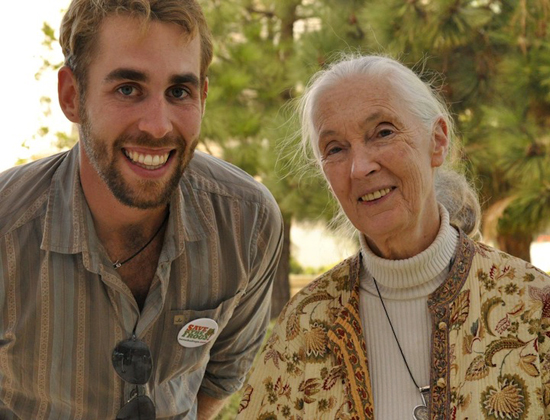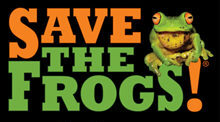An Interview with Michael Starkey, Advisory Committee Chairman of SAVE THE FROGS!
By Scott Harris
Michael Starkey has worked as an ecological consultant for environmental consulting firms and government agencies such as the U.S. Fish and Wildlife Service and the California Department of Fish and Game. He has worked with a wide diversity of California wildlife, including California tiger salamanders, San Francisco garter snakes, giant garter snakes, bats, and ringtails. He has also worked at the Smithsonian Tropical Research Institute in Panama, studying larval development and parental behavior of the neo-tropical frog, Leptodactylus insularum. Michael began volunteering with SAVE THE FROGS! in 2010 and chaired the group’s advisory committee. He regularly lectures on amphibian and reptile conservation.
What initially drew you to frogs?
It’s kind of a funny story. Growing up, I preferred snakes. I actually had a career working with snakes, but then I had a chance to go to Panama. While I was there I saw a lot of different frogs that were going extinct. Some of the locals there had set up a tank with two toads in it, and they were the last two toads of that species they could find. The two were breeding, but the male was infertile. I was saddened by that. It really hit me that these might be the last two. I was also studying Leptodactylus insularum (Barbour’s thin-toed frog) while I was there, so I was watching them a lot. I know it might sound funny, but I watched this mother frog take care of her young. She would kind of growl at intruders, not just people but snakes and even a small crocodile. You could see the motherly devotion.
Why should people care about saving frogs?
There are some threatened species we refer to as charismatic mega-fauna. These are animals we all know, like whales and tigers. It’s certainly easy to be attracted to those animals and to want to protect them. But imagine a world without frogs. It’s more than just liking the animal, though. Amphibians are incredibly important for maintaing balance in the ecosystem. They keep mosquito populations down. They act as sponges that soak up water and nutrients, but they can also absorb toxins and chemicals. So when you see them going away, you can tell the environment is not doing well.
How can people help?
Be like a frog: go green! If people want to make a difference, they can think about where products come from before they buy them. Or make sure they are doing the simple things, like recycling and reducing trash. If it helps the environment, it helps frogs.

Michael G. Starkey served as a SAVE THE FROGS! Ecologist and International Campaigns Coordinator. He began working with SAVE THE FROGS! in 2010 to inform the public about the threats facing amphibians. He rallied scientists, volunteers, and others to help broaden the conservation mission of SAVE THE FROGS! Mr. Starkey has given presentations around the world to inform and help nurture a society that respects and appreciates nature and wildlife.
Mr. Starkey is a biologist, activist, and public speaker working to educate and involve the public in animal rights and wildlife conservation issues. Mr. Starkey has a diverse background in wildlife conservation: he has worked as an ecological consultant for environmental consulting firms and government agencies such as the U.S. Fish & Wildlife Service and the California Department of Fish & Wildlife, working with a wide diversity of wildlife including the endangered San Francisco gartersnakes and California tiger salamanders, bats, ringtails, and Yucatán black howler monkeys. Mr. Starkey has also worked in Panama at the Smithsonian Tropical Research Institute, studying larval development and parental behavior of the neotropical frog, Leptodactylus insularum.
What People Say About Michael…
“Your slide show was great, and you are off the charts with enthusiasm. I loved your section on contests and what they can do to get involved.”
—Anya Manes, teacher at Immaculate Conception Academy, San Francisco, CA
“You should have been here with us after lunch; they can’t stop talking about frogs. You were so patient with the kids.”
—Jacueline Le, teacher at Cleveland Elementary, San Francisco, CA
“Your passion about frogs is infectious and so refreshing. It’s also great for kids to see that scientists are humans with curiosity, not only someone in a lab wearing a white coat.”
—Mira Sinick, 3rd grade teacher at Lawton School, San Francisco, CA
“Your dedication shows, and your imagery was fantastic!”
—Roger Repp, rattlesnake biologist, Tucson Herpetological Society


